The plot on the outskirts of Prague, protected by a forest from the north and sloping very gently into the fields to the south, seemed ideal for an energy efficient house. The final design that was developed for this young family of 3 (planned to grow to 4) is a timber house, energetically very close to the passive house standard, employing natural materials, but mainly trying to be as simple and rational as possible. These two are for us also very important aspects of sustainable architecture.
Architect: Martin Cenek Architecture
Location: Zdiby, Czech Republic
Project Year: 2010
Photographs: Courtesy of Martin Cenek Architecture
Lead Architect: ing.arch. Martin Cenek (*1982)
Production Drawings: ing. Martin Trmal, ing. Martin Ruzicka – Penatus
Structure: ing. Jan Margold, ing. Roman Forfera
Heating: ing. Roman Schneider
Ventilation: ing. Martin Janko
Water and Waste Management: Jiri Holub
Electrical: Petr Manek
Garden Design: ing.arch. Vitezslav Cenek
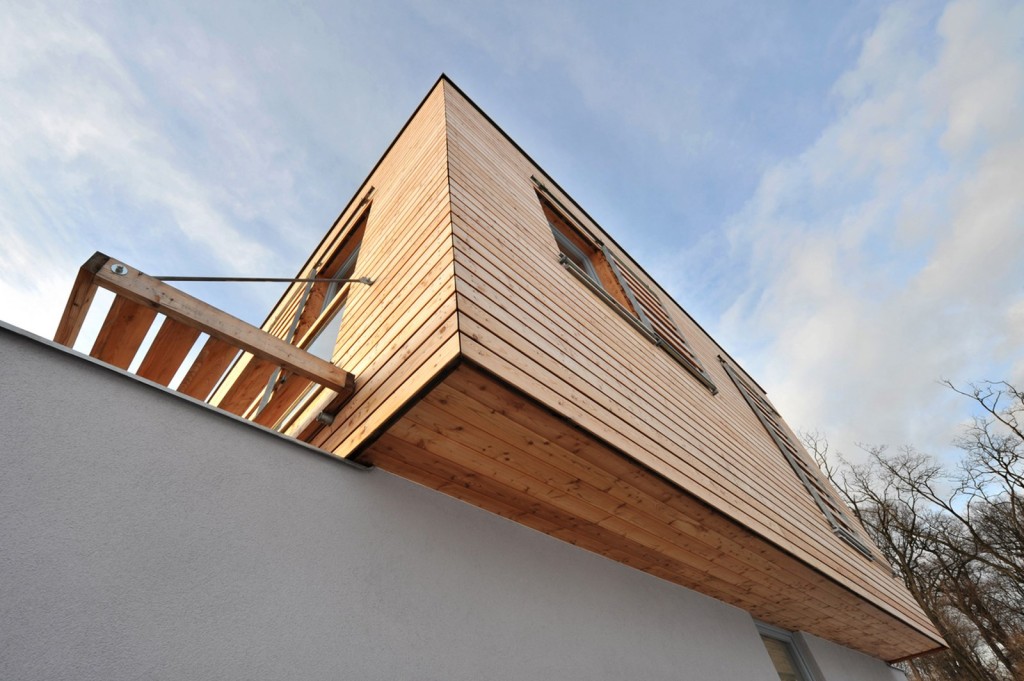
The house is oriented parallel to the neighboring “catalogue” house and creates a clear contrast to its pitched roof and pseudo-classical details, but its ambition is not to overshadow it or criticize it. By its orientation on the plot the house creates a natural barrier between the road to the north and spacious garden on the south side.
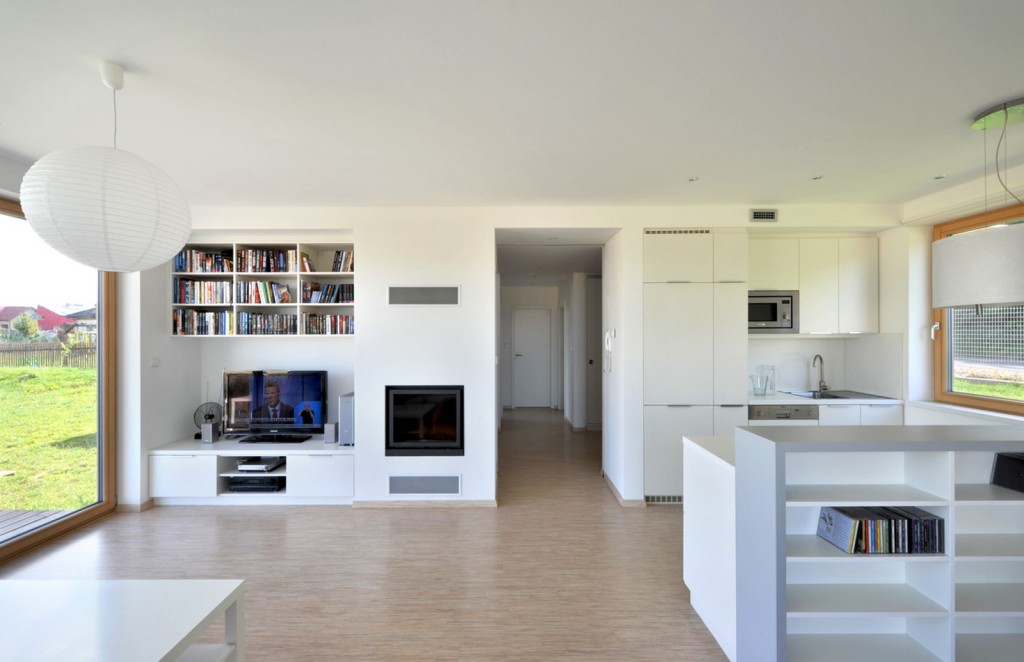
The concept was based on a composition of simple volumes arranged into a compact and clear shape. The whole first floor is clad in larch battens which are also used on the shading panels that slide in front of south and east oriented windows and on the balustrade of the first floor terrace (above the carport). This wooden “basket” of the first floor rests on two transverse grey walls – one on the west side and the other east side of the house. The ground floor volumes – of the day zones of the house itself as well as the one of the garden storeroom are inserted between the two grey outer walls and are finished in reddish rendering. The space between these volumes creates the carport and allows passage between the garden and the road.
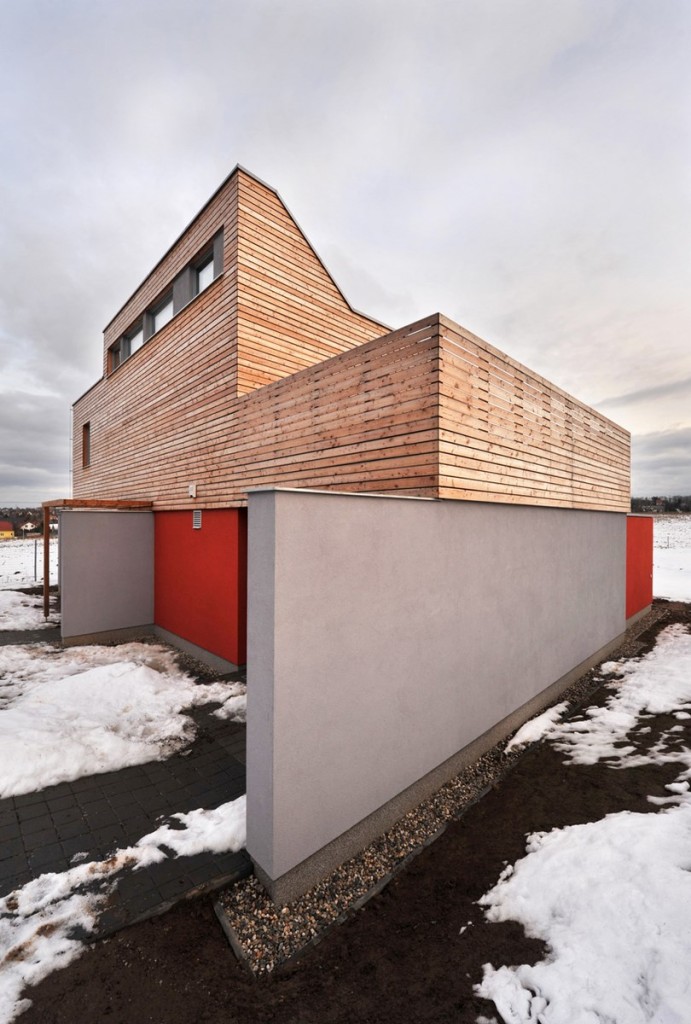
The house opens to the south with a terrace directly extending from the living room and connected with it thanks to the extensive glazing of the south wall (glazed in its full length) shaded by means of a wooden brise-soleil. In the future the terrace should grow further to the south and a swimming pool of the same width is also planned. The north side of the house is more compact and its main feature is a strip window above the level of the flat roof which provides zenithal light to the bathrooms. This sloping part of the roof also serves to mount solar collectors.
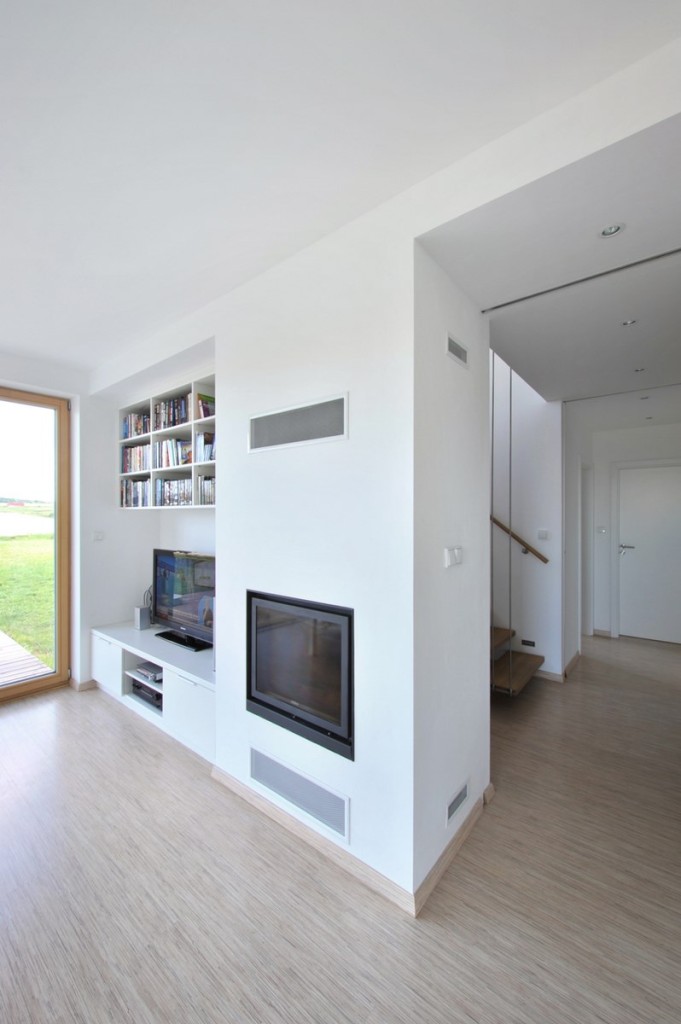
The interior layout tries to open up the living (day) zones of the house as much as possible. Sliding floor to ceiling doors then allow different options of connecting or closing the various zones of the house (living and work/service on the ground floor, children and parents on the first floor). The aim was to minimize corridors and lost spaces. The main feature of the central part of the house is a very light staircase suspended on steel rods from the ceiling. All the built in furniture is simple and white, the aim of the design being to let it blend into the walls and thus give more importance to the occupants of the house and their life.
The structure of the house consists of very simple two-by-four timber framing, with all constructions open to water vapor diffusion. All glazing is made of insulated triple window panes in wooden frames (or frameless in case of the living room).
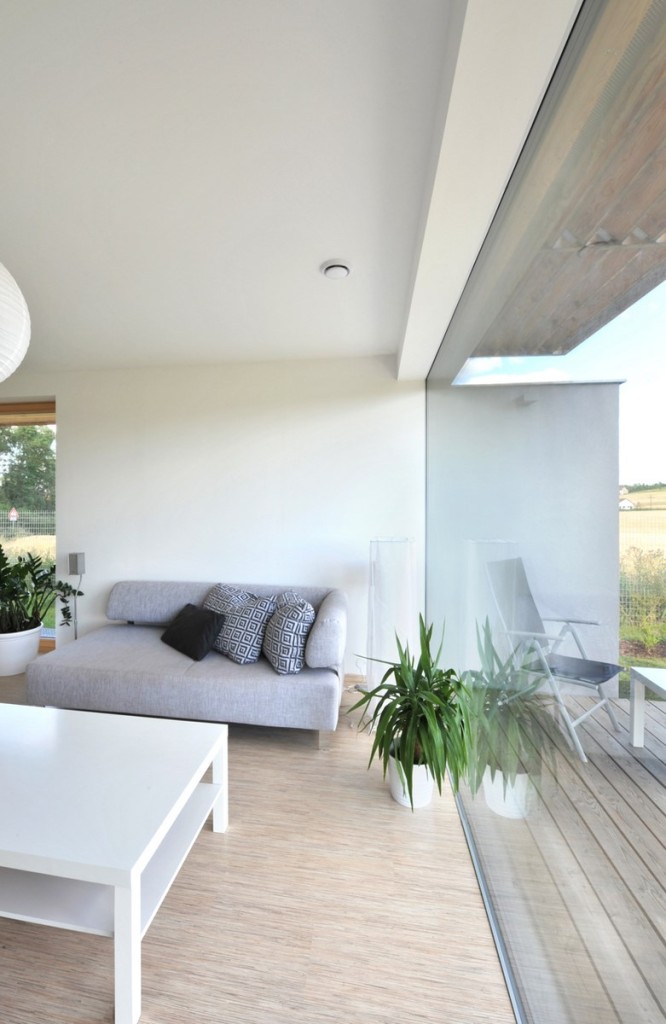
Heating – a simple small electric boiler and low temperature floor heating on the ground floor, very simple radiators on the first floor in combination with air heat recovery system. Water is heated using the thermosolar collectors and an integrated heat storage tank. As the heat losses of the house are relatively low, the fireplace (stove insert) in the living room is purely an esthetical feature.
Next Post
Green River Brateevo | OKRA Landscape Architects
4 Mins Read





